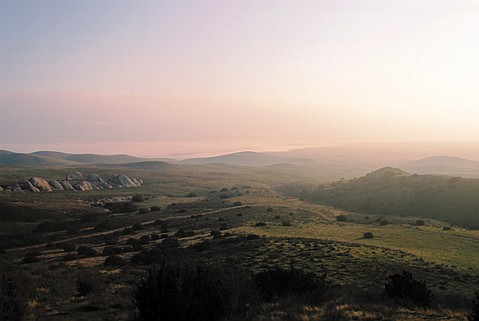Thursday, June 15, 2017
In the two and half hours it takes to drive to the Carrizo Plain, you go back in time about 300 years. Maybe 10,000, should you be lucky enough to check out the Chumash pictographs and rock paintings, said to be some of the most dazzling on the planet. Reservations, by the way, are required and for good reason. Back in the 1920s, much of the rock paintings were vandalized by gun-toting visitors who apparently believed the best way to appreciate native art was by shooting it.
Such insanity aside, there’s something reassuringly prehistoric about the Carrizo Plain. Big. Vast. Immense. Sweeping, powder-blue skies. Oceanic stretches of uninterrupted grasslands. The hills there don’t just roll; they roll their hips. They dance. They dip. There’s a geological friskiness to the land, however quiet, that makes you want to play. It invites you to get your nose up into the face of the San Andreas Fault, which runs along the backside of monument. The sense of sweltering stillness—so overpowering—is in some ways a great optical illusion.
There’s only one main drive—Soda Lake Road—that runs the length of the valley floor, named after a globular lake with such a high alkaline content it looks packed with snow. Maybe half of that 37-mile stretch is paved. The drivability of the rest depends on when it last rained and what kind of vehicle you’re driving. To one side stand Caliente Mountain; to the other, the Temblor Range. Both are best absorbed in the light of dawn or dusk. The Tremblors, in particular, have been carved and sculpted over time; all that detail dances in the sway of evening shadows.
Read the Full Article Here: http://www.independent.com/news/2017/jun/15/carrizo-plain-american-serengeti/









